How ATMs Work?
The automatic teller machine (ATM) is an automatic banking machine (ABM) which allows customer to complete basic transactions without any help of bank representatives. There are two types of automatic teller machines (ATMs). The basic one allows the customer to only draw cash and receive a report of the account balance. Another one is a more complex machine which accepts the deposit, provides credit card payment facilities and reports account information.
It is an electronic device which is used
by only bank customers to process account transactions. The users
access their account through special type of plastic card that is
encoded with user information on a magnetic strip. The strip contains an
identification code that is transmitted to the bank’s central computer
by modem. The users insert the card into ATMs to access the account and
process their account transactions. The automatic teller machine was
invented by john shepherd-Barron in year of 1960.
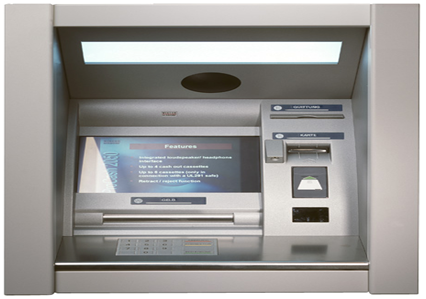
Automatic Telling Machine Block Diagram:
The Automatic telling machine consists of mainly two input devices and four output devices that are;Input Devices:
- Card reader
- Keypad
- Speaker
- Display Screen
- Receipt Printer
- Cash Depositor

- Card Reader:
The
card reader is an input device that reads data from a card .The card
reader is part of the identification of your particular account number
and the magnetic strip on the back side of the ATM card is used for
connection with the card reader. The card is swiped or pressed on the
card reader which captures your account information i.e. the data from
the card is passed on the host processor (server). The host processor
thus uses this data to get the information from the card holders.
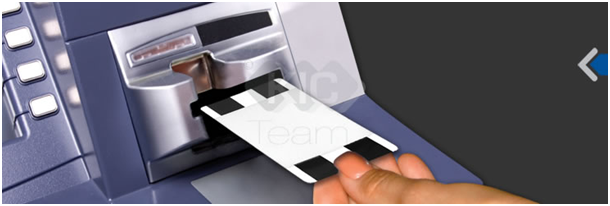
- Keypad:
The
card is recognized after the machine asks further details like your
personal identification number, withdrawal and your balance enquiry Each
card has a unique PIN number so that there is little chance for some
else to withdraw money from your account. There are separate laws to
protect the PIN code while sending it to host processor. The PIN number
is mostly sent in encrypted from. The key board contains 48 keys and is
interfaced to the processor.
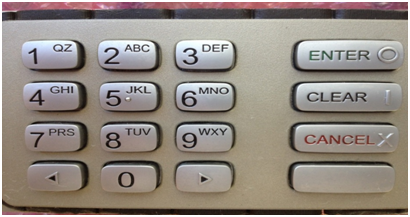
- Speaker:
- Display Screen:
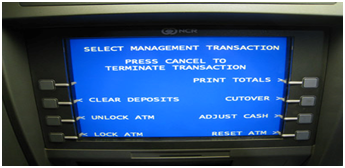
- Receipt Printer:
The
receipt printer print all the details recording your withdrawal, date
and time and the amount of withdrawn and also shows balance of your
account in the receipt.
- Cash Dispenser:
The cash dispenser is a heart of the ATM. This is a central system
of the ATM machine from where the required money is obtained. From this
portion the user can collect the money. The duty of the cash dispenser
is to count each bill and give the required amount. If in some cases the
money is folded, it will be moved another section and becomes the
reject bit. All these actions are carried out by high precision sensors.
A complete record of each transaction is kept by the ATM machine with
help of an RTC device.
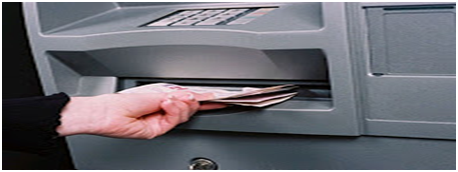
ATM Networking:
The
internet service provider (ISP) also plays an important role in the
ATMs. This provides communication between ATM and host processors. When
the transaction is made, the details are input by the card holder. This
information is passed on to the host processor by the ATM machine. The
host processor checks these details with authorized bank. If the details
are matched, the host processor sends the approval code to the ATM
machine so that the cash can be transferred.
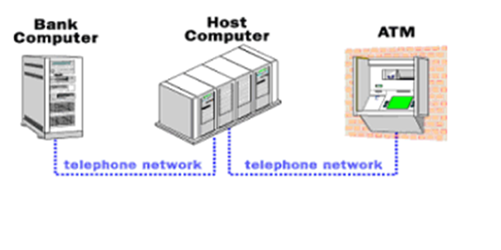
2 Types of ATM Machines
Most of the host processors can support either leased line or dial up machines- Leased line ATM machines
- Dial up ATM machines
The
leased line machines connect direct to the host processor through a
four wire point to point dedicated telephone line. These types of
machines are preferred in place. The operating cost of these machines is
very high.
Dial Up ATM Machines:
The
dial up ATMs connects to the host processor through a normal phone line
using a modem. These require a normal connections their and their
initial installation cost is very less. The operating cost of these
machines is low compared with leased line machines.
ATM Security:
The
ATM card is secured with PIN number which is kept secret. There is no
way to get the PIN number from your card. It is encrypted by the strong
software like Triple data Encryption Slandered.
Automatic Teller Machine Working Principle:

The
Automatic teller machine is simply a data terminal with two input and
four output devices. These devices are interfaced to the processor. The
processor is heart of the ATM machine. All the ATM machines working
around the world are based on centralized database system.
The ATM has to connect and communicate with the host processor
(server). The host processor is communicating with the internet service
provider (ISP). It is the gateway through all the ATM networks
available to the card holder.

When
a card holder wants does an ATM transaction, user provides necessary
information through card reader and keypad. The ATM forwards this
information to the host processor. The host processor enters the
transaction request to the cardholder bank. If the card holder requests
the cash, the host processor takes the cash from the card holder
account. Once the funds are transferred from the customer account to
host processor bank account, the processor sends approval code to the
ATM and the authorized machine to dispense the cash. This is the way to
get the amount on ATMs. The ATM network is fully based on centralized
database environment. This will make life easer and secured the cash.
Advantages of Automatic Teller Machine:
- The ATM provides 24 hours service
- The ATM provides privacy in banking communications
- The ATMs reduce the work load banks staff
- The ATM may give customer new currency notes
- The ATMs are convenient to banks customers
- The ATM is very beneficial for travelers
- The ATM provide services without any error
Features of Automatic Teller Machine:
- Transfer funds between linked bank accounts
- Receive account balance
- Prints recent transactions list
- Change your pin
- Deposit your cash
- Prepaid mobile recharge
- Bill payments
- Cash withdrawal
- Perform a range of feature in your foreign language.
3 comments:
terimaksih untuk artikelnya sangat menarik dan membantu saya untuk belajar,perkenalkan saya Rama januarti dari kampus ISB Atma Luhur
"Great explanation of ATM processing! It’s amazing how quickly these complex steps ensure secure transactions."
Visit PhozellPay
Post a Comment